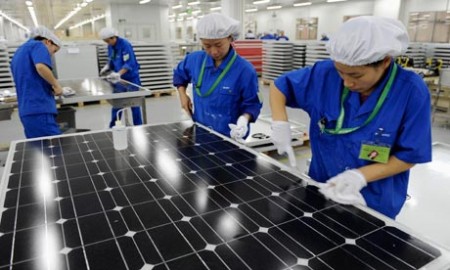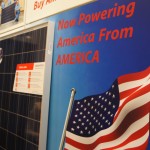Jun 04, 2013
Solar Panel Prices Reversing Trends
Have the price of solar photovoltaic (PV) panels bottomed out? U.S. and European trade policy and international demand may be reversing the trend of decreasing prices for solar panels in the U.S.
As recently as February, the prices of solar panels were continuing to follow the now familiar trend of dropping dramatically – as much as 60% since the beginning of 2011.
An oversupply of panels, especially low-cost panels imported for foreign manufacturers (most notably China) contributed to a five-year steady decline in panel prices. The low-cost of panels ignited tremendous solar growth and cost competitiveness: From 2011-2012, solar installations increased 109%, while overall installation prices dropped by 20%.
According to the U.S. C ommerce Department, the U.S. imported $3.1 billion worth of Chinese solar cells in 2011, accounting for over half of the U.S. market. The cheap panel prices spurred tremendous growth for the solar industry in the U.S., allowing solar developers to promote and install solar systems at low costs – benefiting the residential and commercial markets.
ommerce Department, the U.S. imported $3.1 billion worth of Chinese solar cells in 2011, accounting for over half of the U.S. market. The cheap panel prices spurred tremendous growth for the solar industry in the U.S., allowing solar developers to promote and install solar systems at low costs – benefiting the residential and commercial markets.
However, the sharp fall in prices created a strain on solar manufacturers both in the U.S. and worldwide. As a result of low panel prices, over a dozen U.S. panel makers went bankrupt or closed factories since the start of 2011. Europe faces similar problems. This strain spurred U.S. manufacturers to seek a tariff on Chinese solar panels.
In May of 2012, the United States implemented an “antidumping” tariff on Chinese made solar PV panels, ranging from 24%-36%,.
 Supporters of the tariff claim that it will create a stronger marketplace for manufacturing solar panels in the U.S – “this is another important step in returning the solar marketplace in the U.S. to fair competition,” states Timothy Brightbill, a lawyer representing U.S. manufacturing companies involved in the case.
Supporters of the tariff claim that it will create a stronger marketplace for manufacturing solar panels in the U.S – “this is another important step in returning the solar marketplace in the U.S. to fair competition,” states Timothy Brightbill, a lawyer representing U.S. manufacturing companies involved in the case.
Opponents view the tariff as coming down hard on free trade and limiting the potential for the solar industry in the U.S. – the nation’s fastest growing industry.
Opponents may have a case – it seems as though the tariff is catching up with the industry. As recently as February, PV panel prices were following price trends, but starting in May, solar PV panel prices surged upwards, increasing by 10% to 12%.
Along with international trade tariffs, the demand for solar continues to increase at dramatic rates, creating new customers for cheap solar manufacturers. IHS research predicts countries such as Japan will install more than 5 GW of new solar photovoltaic capacity in 2013 – an increase of 120%.
What does this mean for the U.S. solar market in the short term? We may continue to see a shortage in panels – increased panel prices – longer procurement cycles– higher prices for end users – and possibly some dampening on rates of installation for Q3 and Q4. This may represent a short bump in the road, or the low end of the hockey stick in solar PV pricing, the effects of which remain too early to tell for the nation’s fastest growing industry,